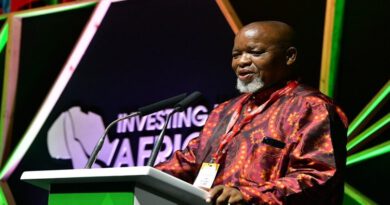GEPF deflects write offs, portfolio up 8.3%
The Government Employees Pension Fund (GEPF) announced its financial results for the year ended March 31, 2018 with investments generating an average return of 8.5% compared to 4.3% in 2017. The latest results come on the back of a turbulent year with the first half of year marred by a technical recession in South Africa and a 2017 which only registered 0.8% GDP growth.
The fund’s investment portfolio improved as domestic bonds and equities registered strong returns in the past year. “Listed equities increased by 10%, domestic bills and bonds by 6%, foreign collective investment scheme by 7% due to new investment while domestic unlisted equities increased by 37% as a result of a positive fair value adjustment and additions,” said the GEPF in a statement.
Despite a 0.05% decrease in total membership of 0.05%, member contributions improved by 7.3% in the reporting period to R70.4 billion, which was attributed to salary increases. In light of the membership drop, GEPF is set to cut implement cost containment strategies to improve performance. “At one level, we need to watch the administrative costs like how much it costs the GEPF to administer each member’s pension. But we also need to watch the fee we pay to the Public Investment Corporation (PIC) as an investment manager and we still think that there is scope for us to derive a slightly better fee than what we are currently paying.”
The GEPF, which manages government employee savings, recently made headlines after confirming that the fund had written off two investments totalling R5.3 billion. Among the contentious investments ia the GEPF’s R4.3 billion venture in Steinhoff’s Lancaster, which later lost its value after the 2017 Steinhoff scandal.
“The reduction in the share price of Steinhoff has had implications on the structure that was put in place to enable the black participants to take part in Steinhoff,” says Abel Sithole, principal executive officer at the GEPF.
“This is covered through an option the PIC entered into with a major international bank which means that at this point in time, that value is still protected but we also need to recognise that the difference between what is protected and the share price might present some headwinds if Steinhoff does not recover.”
Although the GEPF still defines the Steinhoff investment as impairment and not a write off, it remains unclear as to when the fund will write off the investment. “This is probably a relative thing. If you look at Steinhoff – where the stock price was last year before the debacle and now, the biggest depreciation has already happened and that was in December last year. So if things are as bad as people think they are, the loss has already been incurred.”
In addition, R1 billion in loans to Iqbal Surve were also written off fuelling speculation on the fund’s investment choices.
The annual report shed light on GEPF’s accumulated funds and reserves, which have grown at an average rate of 10.21% over the past 10 years but also alluded to more exposure to toxic assets such as a R375 million investment in VBS Mutual Bank, which was placed under curatorship in March 2018 after its directors made away with about R2 billion.
“So it may as well be a write off and currently, we are reflecting VBS at zero and the impairment has put the value of VBS at zero,” confirms Sithole. “We have not written it off because we still think there is potential for recovery that is why we have simply impaired it and put it at zero but we know that the value of VBS is not zero.”
Source: moneyweb.co.za


